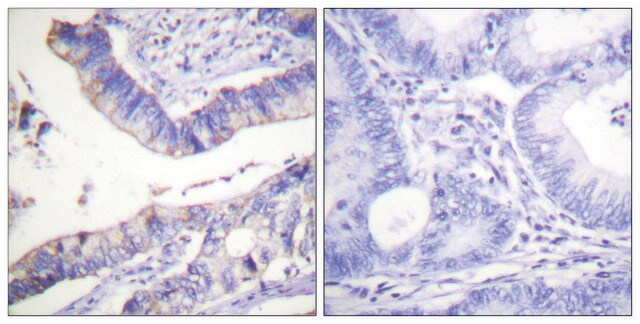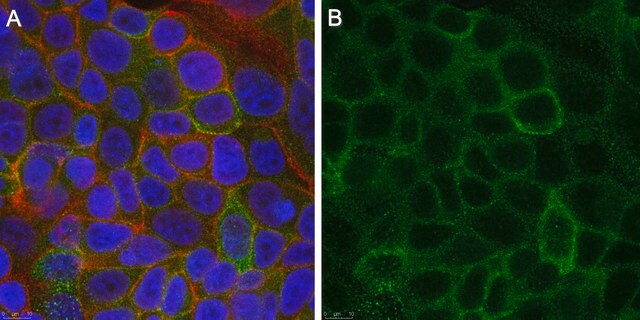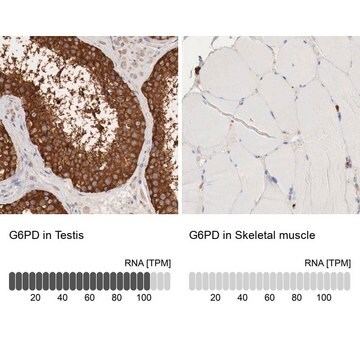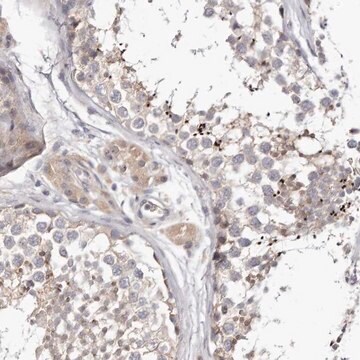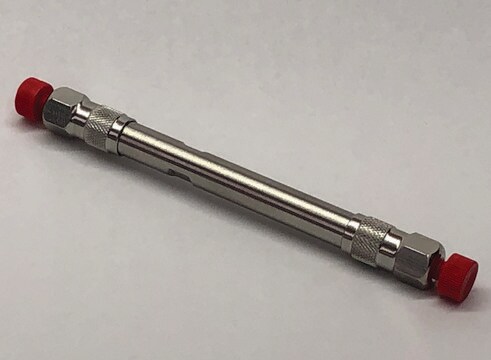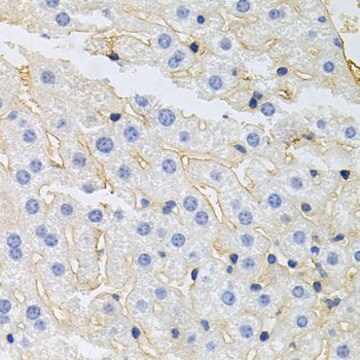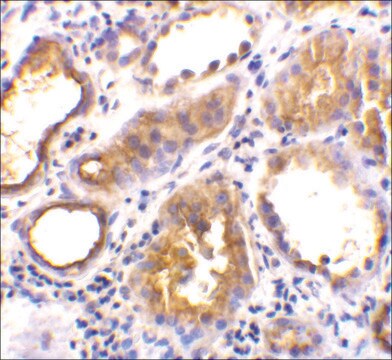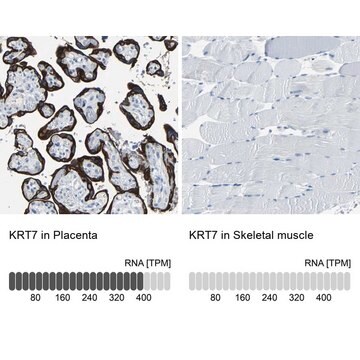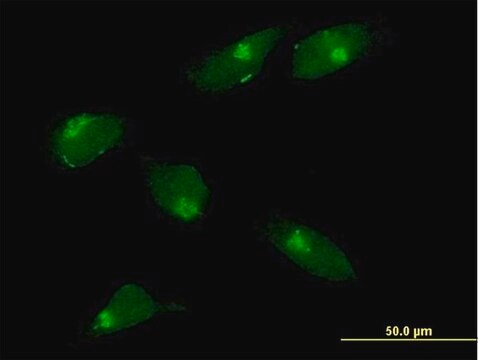MABS2233
Anti-Intestinal Villus Antibody, clone B6A6
Synonym(s):
Intestinal crypt cells
About This Item
Recommended Products
biological source
rat
Quality Level
conjugate
unconjugated
antibody form
purified antibody
antibody product type
primary antibodies
clone
B6A6, monoclonal
purified by
using protein G
species reactivity
mouse
packaging
antibody small pack of 100 μg
technique(s)
flow cytometry: suitable
immunohistochemistry (formalin-fixed, paraffin-embedded sections): suitable
isotype
IgG2aκ
epitope sequence
Unknown
Protein ID accession no.
UniProt accession no.
shipped in
ambient
target post-translational modification
unmodified
Related Categories
General description
Specificity
Immunogen
Application
Isotype testing: Identity Confirmation by Isotyping Test.
Isotyping Analysis: The identity of this monoclonal antibody is confirmed by isotyping test to be mouse IgG2a .
Tested Applications
Flow Cytometry Analysis: A representative lot detected Intestinal Villus in Lgr5-GFP mouse intestinal cells ( Data courtesy of Prof. Melissa Wong, Ph.D., Oregon Health & Science University, Portland, Oregon USA).
Immunohistochemistry Applications: A representative lot detected Intestinal Villus cells in Immunohistochemistry applications (Wang, F., et al. (2013). Gastroenterology. 145(2): 383-95.e1-21).
Flow Cytometry Analysis: A representative lot detected Intestinal Villus in Flow Cytometry applications (Wang, F., et al. (2013). Gastroenterology. 145(2): 383-95.e1-21; Smith, N.R., et al. (2017). Cell Mol Gastroenterol Hepatol. 3(3): 389-409; Yan, K.S., et al. (2017). Cell Stem Cell. 21(1):7 8-90.e6; Smith, N.R., et al. (2018). Cell Mol Gastroenterol Hepatol. 6(1): 79-96).
Note: Actual optimal working dilutions must be determined by end user as specimens, and experimental conditions may vary with the end user
Physical form
Storage and Stability
Other Notes
Disclaimer
Not finding the right product?
Try our Product Selector Tool.
Storage Class Code
12 - Non Combustible Liquids
WGK
WGK 1
Certificates of Analysis (COA)
Search for Certificates of Analysis (COA) by entering the products Lot/Batch Number. Lot and Batch Numbers can be found on a product’s label following the words ‘Lot’ or ‘Batch’.
Already Own This Product?
Find documentation for the products that you have recently purchased in the Document Library.
Our team of scientists has experience in all areas of research including Life Science, Material Science, Chemical Synthesis, Chromatography, Analytical and many others.
Contact Technical Service